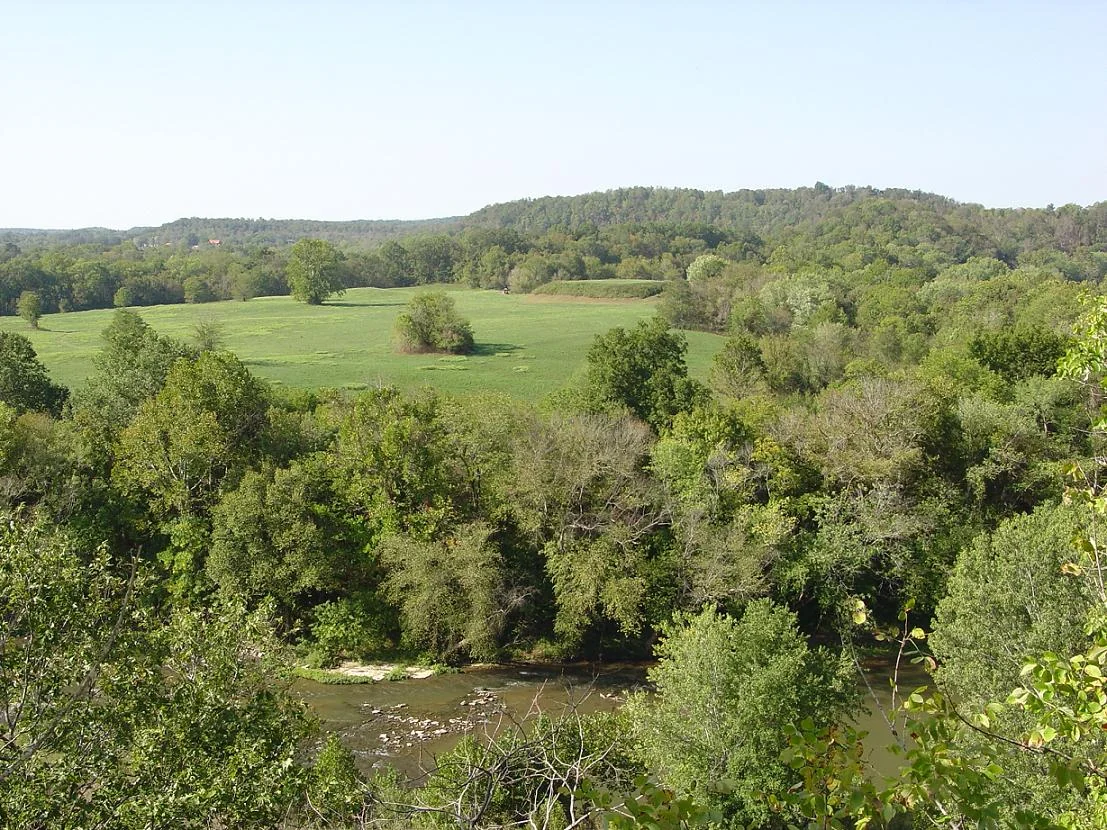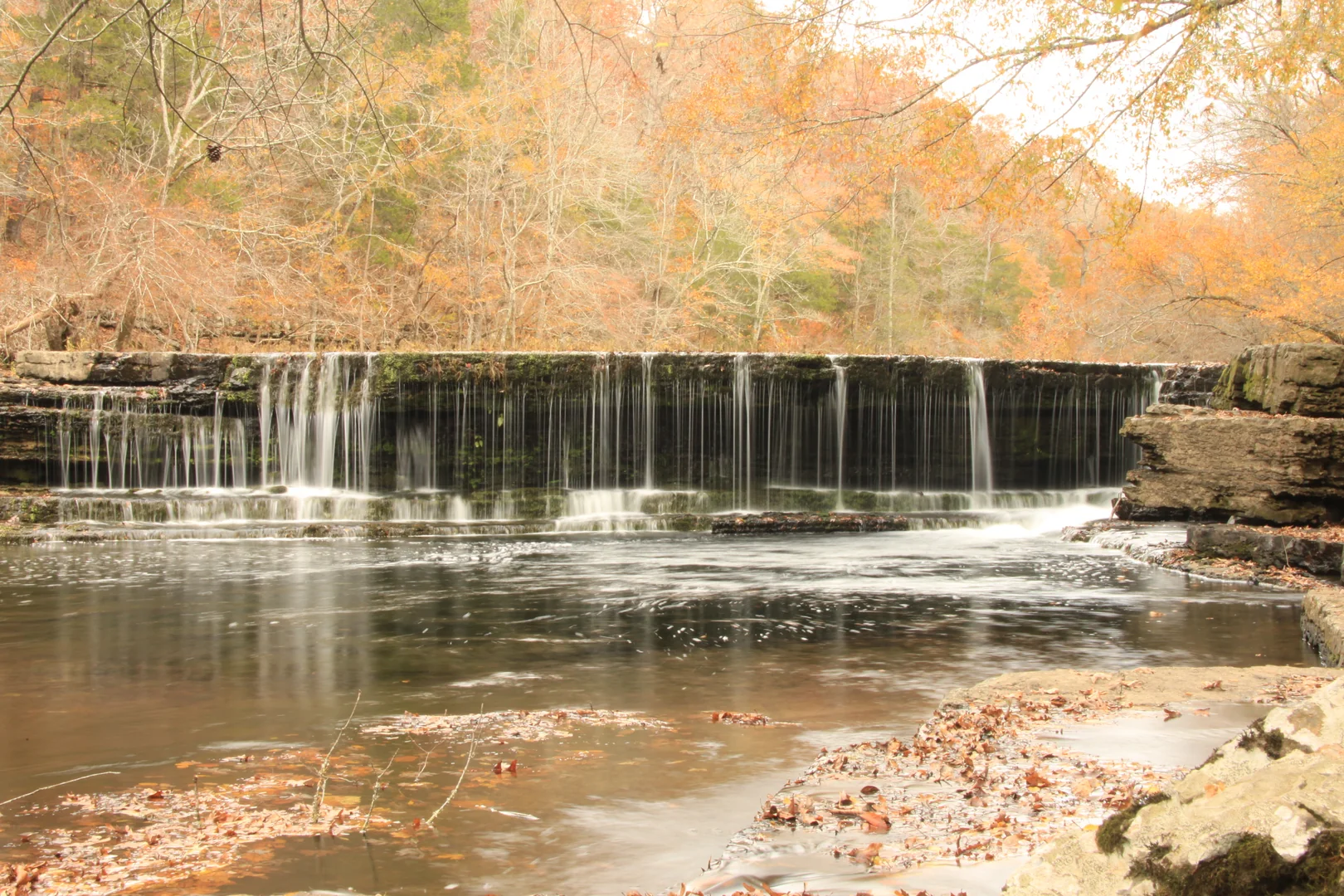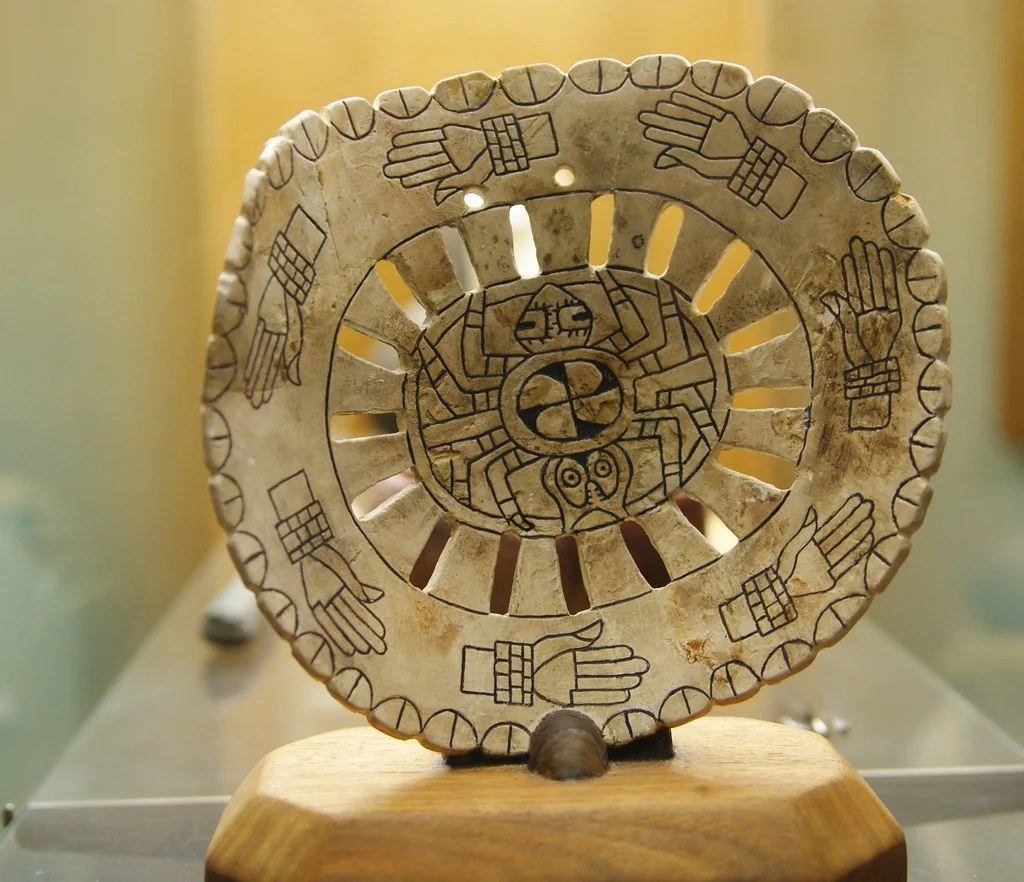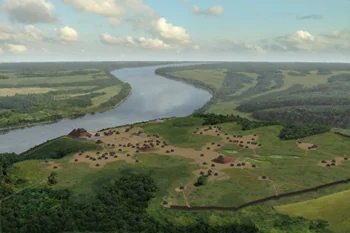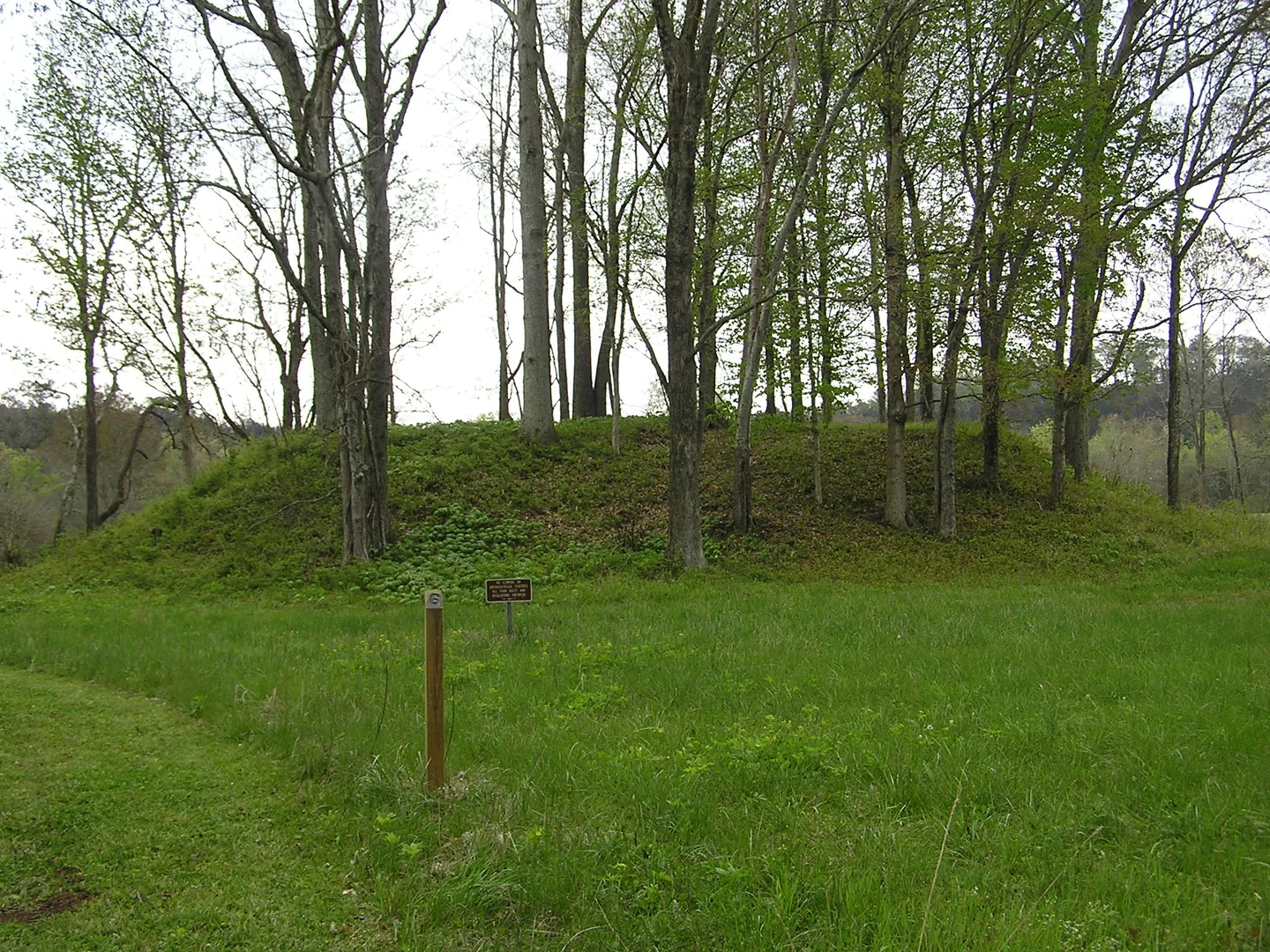8 Most Significant Archaeological Sites in Tennessee
Complete guide to 8 most significant archaeological sites in tennessee. Detailed information, recommendations, and everything you need to know

Tennessee's archaeological landscape tells the story of sophisticated Native American civilizations that thrived for thousands of years across the region's diverse terrain. From towering ceremonial mounds that rival ancient pyramids to mysterious stone enclosures hidden in rolling hills, these sites preserve the cultural legacy of the Mississippian, Middle Woodland, and other indigenous peoples who shaped this land long before European contact.
What makes Tennessee's archaeological sites particularly remarkable is their diversity and accessibility. You'll find everything from massive earthworks that required generations to build to intimate rock art galleries carved into riverside bluffs. These aren't just tourist attractions - they're active research sites where archaeologists continue uncovering new insights about ancient trade networks, religious practices, and daily life spanning over 12,000 years of human occupation.
Planning your archaeological journey requires understanding that each site offers a different window into Tennessee's past. Some feature comprehensive museums and reconstructed villages, while others invite contemplative walks through largely undisturbed ancient landscapes. The remarkable vista at sites like Mound Bottom reveals the strategic thinking of ancient peoples who chose elevated locations for their most important ceremonial centers.
Mound Bottom State Archaeological Park - Explore the largest Mississippian period ceremonial complex in Middle Tennessee, featuring massive earthen mounds built between 1000-1300 CE that once served as a major political and religious center.
Mound Bottom represents the pinnacle of Mississippian culture in Middle Tennessee, where ancient engineers constructed a sprawling ceremonial complex that once rivaled Cahokia in scope and importance. This 300-acre site along the Harpeth River contains at least 13 major earthen mounds arranged around central plazas, creating a sophisticated urban landscape that housed thousands of people during its peak between 1000-1300 CE.
The site's crown jewel is the primary temple mound, rising 35 feet above the surrounding floodplain and originally supporting wooden structures where religious and political leaders conducted ceremonies visible throughout the valley. Archaeological evidence suggests this mound underwent multiple construction phases, with each generation adding new layers of earth and clay in carefully planned building campaigns that required coordinating hundreds of workers.
Recent excavations have revealed the complex's role as a regional trade hub, with artifacts from across the southeastern United States including marine shells from the Gulf Coast, copper from the Great Lakes, and specialized pottery from distant villages. The discovery of workshop areas indicates skilled artisans lived permanently at Mound Bottom, producing prestige goods that reinforced the elite's power and maintained trade relationships across vast distances.
Visiting Mound Bottom requires advance planning since the state park offers guided tours by appointment only. Contact the park office at least 48 hours ahead to arrange your visit, particularly during spring and fall when demand is highest. The standard tour lasts approximately two hours and covers the main ceremonial precinct, including climbs to the top of several mounds where guides explain the site's layout and significance.
The walking trails involve moderate terrain with some steep sections, so wear sturdy shoes and bring water, especially during summer months. Photography is encouraged, and the elevated views from the temple mound provide excellent opportunities to capture the site's relationship to the surrounding landscape. The park charges $5 per adult for guided tours, with reduced rates for students and seniors. Free parking is available near the visitor contact station.
Pinson Mounds State Archaeological Park - Discover Tennessee's largest collection of Middle Woodland period ceremonial mounds, including Sauls Mound, one of the tallest prehistoric structures in the United States at 72 feet high.
Pinson Mounds stands as Tennessee's premier Middle Woodland archaeological site, preserving 17 mounds within a 1,200-acre state park that showcases the sophisticated engineering abilities of peoples who lived here between 1-500 CE. The site's commanding presence centers on Sauls Mound, a massive earthwork that towers 72 feet high and spans 120 feet at its base, making it one of the tallest prehistoric structures in the United States and a testament to the organizational capabilities of ancient societies.
The remarkable landscape of interconnected mounds served both ceremonial and astronomical purposes, with recent research suggesting specific alignments to solar and lunar cycles that guided agricultural and religious activities. The geometric earthworks include not just burial mounds but also ceremonial enclosures and habitation areas that supported a complex society engaged in long-distance trade networks stretching from the Great Lakes to the Gulf of Mexico.
The park's museum provides essential context before exploring the mounds themselves, featuring artifacts recovered from decades of careful excavation including elaborate burial goods, copper ornaments, and pottery that reveals artistic traditions spanning several centuries. Interactive exhibits explain the construction techniques used to build these monumental earthworks, including the sophisticated engineering required to prevent erosion and maintain structural integrity over millennia.
Walking the park's extensive trail system allows intimate exploration of this ancient landscape, with paved paths connecting the major mounds and interpretive signs explaining their functions and construction chronology. The trail to Sauls Mound's summit offers panoramic views across West Tennessee's rolling countryside, providing perspective on why ancient peoples chose this elevated location for their most important ceremonial activities.
The park operates year-round with free admission to the grounds and museum, making it one of Tennessee's most accessible archaeological destinations. The visitor center opens Tuesday through Saturday from 8 AM to 4:30 PM, and Sunday from 1 PM to 4:30 PM. Group tours can be arranged with advance notice, and the park hosts special events including archaeology days and Native American cultural demonstrations throughout the year.
Plan to spend at least half a day exploring Pinson Mounds thoroughly, as the site's scale requires time to appreciate fully. The main trail loop covers approximately two miles with minimal elevation changes except for the optional climb up Sauls Mound, which involves a moderately steep path but rewards visitors with spectacular views and a profound sense of connection to Tennessee's ancient past.
Old Stone Fort State Archaeological Park - Investigate the mysterious 2,000-year-old hilltop enclosure built by ancient peoples, featuring stone walls that may have served ceremonial rather than defensive purposes.
The Old Stone Fort challenges conventional understanding of prehistoric architecture, presenting visitors with a 2,000-year-old mystery that continues puzzling archaeologists and inspiring wonder among those who walk its ancient stone walls. This remarkable enclosure, built by Middle Woodland peoples between 80-400 CE, encompasses 50 acres atop a peninsula formed by the confluence of the Duck River and Little Duck River in Manchester.
What makes this site extraordinary isn't just its age or construction technique, but the ongoing debate about its purpose. The stone and earthwork walls, ranging from 3-6 feet in height and extending for nearly half a mile, incorporate natural bluffs and artificial barriers to create a complete enclosure. However, recent archaeological investigations suggest these walls served ceremonial rather than defensive functions, as evidenced by the lack of typical fortification features and the presence of formal entrances aligned to astronomical phenomena.
The site's builders demonstrated remarkable engineering skills, carefully selecting and placing thousands of limestone blocks without mortar to create walls that have withstood millennia of weathering. The walls follow the natural topography while incorporating three formal gateways that align with significant solar and lunar events, suggesting the enclosure functioned as a massive ceremonial calendar marking important seasonal transitions.
Archaeological excavations within the enclosure have revealed evidence of periodic gatherings rather than permanent occupation, with artifacts indicating people traveled considerable distances to participate in ceremonies held within these sacred walls. The discovery of exotic materials including marine shells and copper objects confirms the site's importance extended far beyond the local region, connecting Middle Woodland communities across the southeastern United States.
The park offers excellent hiking opportunities along the stone walls, with a well-maintained trail system that provides access to the most significant architectural features while protecting sensitive archaeological areas. The main loop trail covers 1.3 miles and includes interpretive stations explaining the construction techniques and possible functions of different wall segments. The trail involves moderate terrain with some rocky sections, so appropriate footwear is essential.
The stunning vista from various points along the walls reveals the strategic location chosen by ancient builders, with commanding views across the river valleys that would have been visible for miles during ceremonial gatherings. The park also features beautiful waterfalls created by the Duck River's passage through limestone formations, adding natural beauty to the archaeological significance.
Admission to Old Stone Fort State Archaeological Park is free, with parking available near the museum and trailheads. The museum operates seasonally with reduced winter hours, but the trails remain open year-round for self-guided exploration. The park provides detailed brochures with maps and explanatory information for independent visitors, though guided tours can be arranged for groups with advance notice.
Chucalissa Indian Village - Experience a reconstructed Mississippian village near Memphis with authentic dwelling replicas, ongoing archaeological excavations, and artifacts spanning 1,000 years of Native American occupation.
Chucalissa transforms archaeological research into tangible experience, offering visitors the opportunity to walk through a carefully reconstructed Mississippian village that brings 1,000 years of Native American history to vivid life. Located just south of Memphis along the Mississippi River bluffs, this site preserves evidence of continuous occupation from 900-1600 CE, making it one of Tennessee's longest-inhabited prehistoric locations and a window into the daily lives of ancient peoples.
The reconstructed village features authentic replicas of thatched-roof houses, storage structures, and ceremonial buildings based on extensive archaeological evidence recovered from decades of systematic excavation. These structures demonstrate the sophisticated architecture developed by Mississippian peoples, including raised floors for flood protection, efficient ventilation systems, and specialized spaces for different activities from food preparation to craft production.
The site's active archaeology program allows visitors to observe ongoing excavations during summer field seasons, providing rare opportunities to watch professional archaeologists uncovering artifacts and features that expand understanding of prehistoric life along the Mississippi River. The research has revealed evidence of complex social organization, extensive trade networks, and agricultural innovations that supported dense populations for centuries.
The museum houses one of the Southeast's finest collections of Mississippian artifacts, including elaborate pottery, shell ornaments, stone tools, and ceremonial objects that illuminate the artistic achievements and daily practices of Chucalissa's residents. Interactive exhibits explain everything from corn agriculture techniques to the social hierarchy that characterized these sophisticated societies, with hands-on activities that engage visitors of all ages.
Walking trails connect the reconstructed village with the original archaeological areas, including several preserved mounds that served ceremonial and residential functions. The main temple mound rises 35 feet above the surrounding landscape, offering views across the Mississippi River valley that help visitors understand why ancient peoples chose this strategic location for one of their major settlements.
Chucalissa operates as both a public archaeological site and research facility affiliated with the University of Memphis, ensuring that interpretive information reflects current scholarly understanding while ongoing research continues expanding knowledge about prehistoric Tennessee. This combination of public education and active research creates a dynamic environment where new discoveries regularly enhance the visitor experience.
The site charges $6 for adults and $4 for children, with reduced rates for students and seniors. Hours vary seasonally, with extended summer schedules during active excavation periods when visitors can interact with working archaeologists. Group tours and educational programs can be arranged in advance, and the site regularly hosts special events including Native American cultural demonstrations and traditional craft workshops.
Plan to spend 2-3 hours exploring Chucalissa thoroughly, as the combination of reconstructed village, museum exhibits, and archaeological areas provides comprehensive insight into Mississippian culture. The site includes picnic areas and a gift shop featuring Native American crafts and archaeological publications for those wanting to continue learning about Tennessee's prehistoric heritage.
Spiro Mounds Archaeological Center - Visit this cross-border site near the Tennessee-Arkansas line that reveals the sophisticated Spiro culture through elaborate burial goods, shell engravings, and evidence of extensive trade networks.
Spiro Mounds represents the western frontier of Mississippian culture, preserving one of the most significant archaeological sites in the American Southeast just across the Arkansas border from Tennessee. This remarkable complex flourished between 900-1450 CE as a major ceremonial and trade center whose influence extended throughout the region, making it essential for understanding the broader cultural landscape that included Tennessee's Mississippian sites.
The site's significance lies in its role as a cultural crossroads where Mississippian traditions merged with Plains and Southwestern influences, creating a unique artistic and ceremonial complex revealed through some of the most spectacular prehistoric artifacts ever discovered in North America. The elaborate burial goods recovered from Spiro's mounds include engraved shell cups, copper plates, textiles, and ceremonial weapons that demonstrate the sophisticated artistry and extensive trade connections maintained by this ancient center.
Archaeological investigations have revealed Spiro's function as a pilgrimage destination where people traveled vast distances to participate in ceremonies and exchange goods, ideas, and cultural practices. The site's location along the Arkansas River facilitated trade relationships stretching from the Great Lakes to the Gulf of Mexico, with artifacts representing one of the most extensive prehistoric trade networks documented in North America.
The Craig Mound, Spiro's largest earthwork, originally stood 34 feet high and contained burial chambers filled with grave goods that reveal the complex social hierarchy and religious beliefs of Mississippian peoples. Though early excavations damaged portions of the site, careful conservation efforts have preserved remaining features while the interpretive center displays artifacts that illuminate the artistic achievements and cultural sophistication of Spiro's inhabitants.
The museum showcases the remarkable Woolaroc Spiro Mounds artifacts, including the famous engraved shells that depict complex iconographic scenes involving supernatural beings, ceremonial activities, and cosmic symbolism that connected Mississippian religious beliefs across the Southeast. These artifacts provide crucial insights into the shared cultural traditions that linked sites like Spiro with Tennessee's Mississippian centers including Mound Bottom and Chucalissa.
Visiting Spiro requires a short drive from Tennessee but provides essential context for understanding the broader Mississippian world that flourished throughout the region. The interpretive center offers guided tours that explain the site's significance and its connections to Tennessee's archaeological sites, helping visitors appreciate the extensive cultural networks that characterized prehistoric Southeastern societies.
The site charges $7 for adults and $5 for students and seniors, with free admission for children under 6. Hours vary seasonally, with extended summer schedules and reduced winter operations. The center provides educational programs for groups with advance reservations, and special events throughout the year celebrate Native American heritage and archaeological research achievements.
The walking trails at Spiro connect the remaining mounds with the interpretive center, providing opportunities to explore this ancient landscape while learning about its significance through interpretive signs and guided tours. The trails involve minimal elevation changes and are accessible to visitors with various mobility levels, making this important site available to broad audiences interested in prehistoric Southeastern culture.
Shiloh Indian Mounds National Historic Landmark - Walk among prehistoric ceremonial mounds within Shiloh National Military Park, where ancient Native American sacred sites coexist with Civil War battlefield archaeology.
Shiloh presents a unique archaeological landscape where prehistoric Native American ceremonial sites share the same ground with one of the Civil War's most significant battlefields, creating a layered historical experience that spans over 2,000 years of human activity. The Shiloh Indian Mounds, built by Middle Woodland peoples between 100 BCE-200 CE, represent some of Tennessee's oldest surviving earthworks and provide crucial insights into the religious practices and social organization of ancient societies.
The site contains several well-preserved mounds arranged in a complex that once served as a major ceremonial center for prehistoric communities throughout the Tennessee River valley. Archaeological investigations have revealed that these mounds underwent multiple construction phases, with successive generations adding layers of earth and clay while conducting elaborate burial ceremonies that deposited grave goods including copper ornaments, marine shells, and specialized pottery from distant regions.
What makes Shiloh particularly fascinating is the juxtaposition of ancient Native American sacred sites with Civil War battlefield archaeology, creating opportunities to explore how different cultures used the same landscape for ceremonial and strategic purposes. The elevated locations chosen by prehistoric peoples for their mounds later provided tactical advantages during the 1862 battle, demonstrating the enduring significance of topography in human settlement and conflict patterns.
The National Park Service has developed interpretive programs that address both the prehistoric and historic significance of Shiloh, with the visitor center museum featuring exhibits about the ancient mound builders alongside Civil War artifacts and interpretations. This comprehensive approach helps visitors understand the deep history of human occupation in the Tennessee River valley and the cultural continuity that connects prehistoric and historic periods.
Walking trails throughout Shiloh National Military Park provide access to the Indian mounds while connecting them with Civil War battlefield sites, creating a unique interpretive experience that demonstrates how archaeological sites exist within broader historical landscapes. The main trail system covers several miles with minimal elevation changes, making the mounds accessible to visitors with various interests and physical capabilities.
The aerial illustration perspective reveals the strategic positioning of both the prehistoric ceremonial complex and later military positions, showing how topographic features influenced human activities across millennia. The mounds' locations along elevated ridges provided commanding views of the Tennessee River and surrounding valleys, explaining why both ancient peoples and Civil War armies found these positions significant.
Park admission costs $10 per vehicle and is valid for seven days, providing access to both the prehistoric mounds and Civil War battlefield sites. The visitor center operates year-round with seasonal hour variations, offering orientation films, museum exhibits, and bookstore materials covering both aspects of Shiloh's significance. Guided tours can be arranged for groups, and the park hosts special events including archaeology programs and Native American cultural demonstrations.
The combination of prehistoric and historic sites makes Shiloh ideal for visitors interested in Tennessee's complete human story, from ancient mound builders through Civil War battlefields. Plan to spend at least half a day exploring both aspects of the park's significance, as the layered history provides unique insights into how different cultures shaped and used the same landscape over thousands of years.
Sellars Indian Mound and Museum - Examine Middle Woodland period artifacts and climb the restored ceremonial mound in Wilson County, one of the few sites where visitors can actually ascend an ancient Native American structure.
Sellars Indian Mound offers an intimate encounter with Middle Woodland culture, providing one of Tennessee's few opportunities for visitors to actually climb to the summit of a restored prehistoric ceremonial mound while
